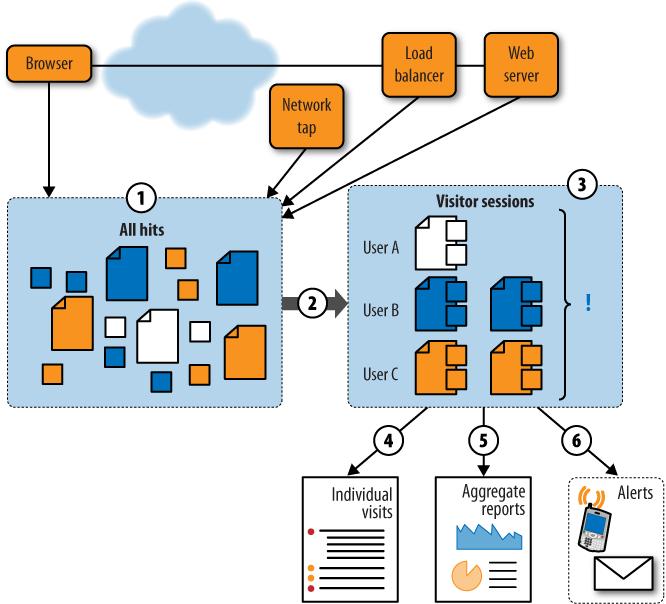Capturing End User Experience
Armed with thousands of measurements of individual page requests, you can answer two important questions: could visitors use the website? What were their experiences like?
The first question involves problem diagnosis and dispute resolution. When someone calls with a problem, you can quickly see what happened. You can even detect and resolve a problem before she calls, because your RUM tool has seen the error occur.
The second question involves segmentation and reporting. You can look across all requests of a certain type—a specific browser, a geographic region, a URL, and so on—and analyze the performance and availability of the website for capacity planning or to understand how the site’s performance affects business outcomes.
Both questions are vital to your web business. To answer them, you first need to collect all those page measurements. The work you’ll need to do depends heavily on which RUM approach you use.
How RUM Works
RUM solutions vary widely, but always involve the following basic steps, as shown in Figure 10-3.

Figure 10-3. The basic steps in all RUM solutions
Capture. The monitoring system captures page and object hits from several sources—JavaScript on a browser, a passive network tap, a load balancer, or a server and its logfiles.
Sessionization. The system takes data about these hits and reassembles it into a record of the pages and components ...
Get Complete Web Monitoring now with the O’Reilly learning platform.
O’Reilly members experience books, live events, courses curated by job role, and more from O’Reilly and nearly 200 top publishers.

